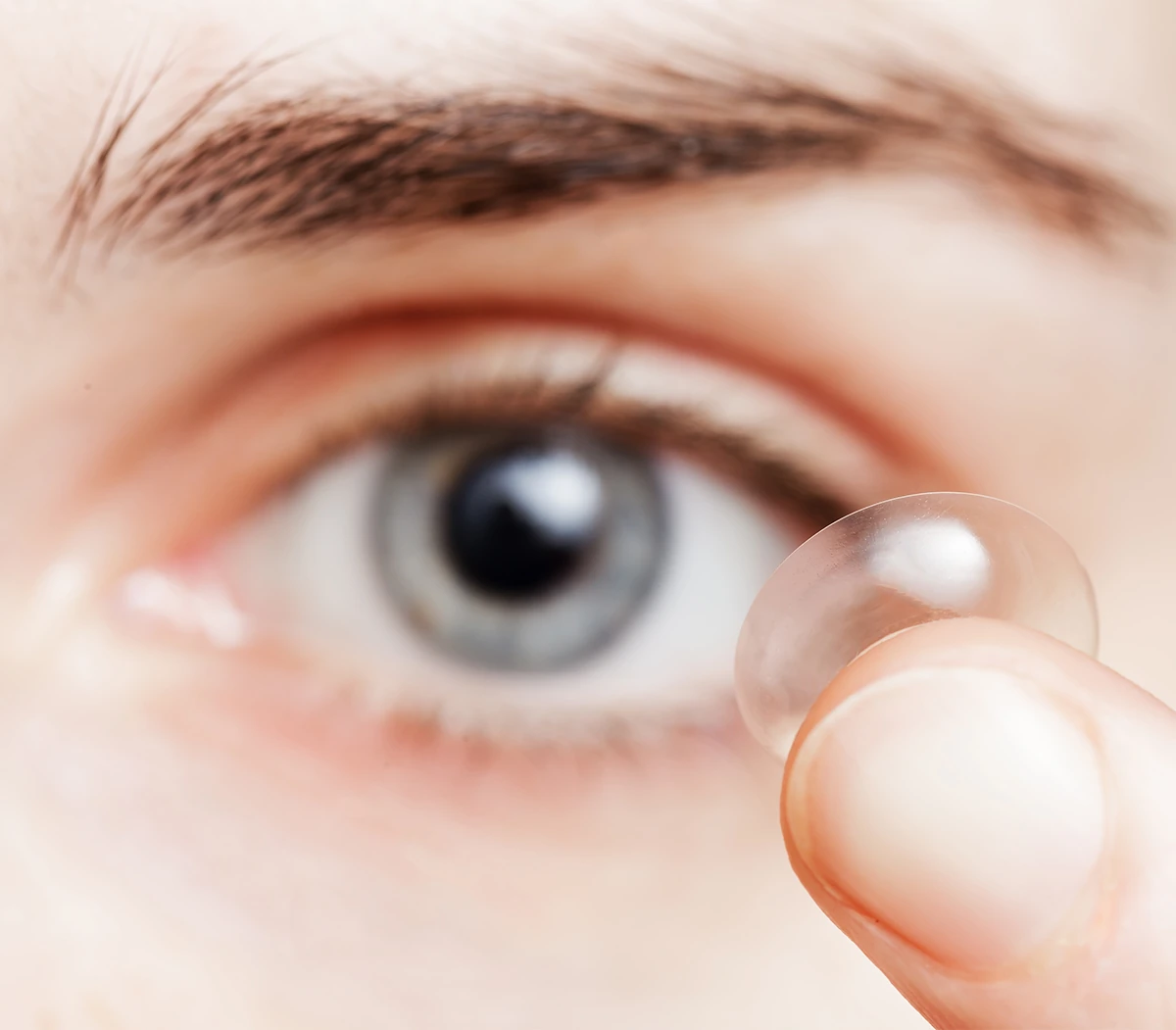
Corneal Ulcer
A corneal ulcer is a painful wound on the cornea that may be the result of scratches, injury, or poor contact lens care. In addition to pain, a corneal ulcer may cause decreased vision, eye redness, light sensitivity, swelling of the eyelids, or the sensation that there is something in the eye.
The cornea is the clear layer of the frontmost part of the eye. Its role is to protect structures behind it from debris and germs. The cornea is also involved in focusing light that enters the eye, directing it toward the retina so vision can be formed. An injury or infection in the cornea can lead to an ulcer. A corneal ulcer is a medical emergency that should be treated promptly.

Symptoms Of A Corneal Ulcer
The symptoms of infection may be noticed before signs of a corneal ulcer appear. Noticing these symptoms and obtaining proper care reduces the risk of a severe corneal ulcer.
- Itchy, watery eye
- Redness in one or both eyes
- Stinging or burning sensation
- Light sensitivity
- Discharge from the infected eye
Direct symptoms of a corneal ulcer may include:
- Swelling in the eyelid
- Excessive tearing
- Soreness in the eye
- Discharge from the eye
- Light sensitivity
- Blurry vision
- Foreign body sensation or grittiness
- White spot on the cornea (this may only be visible by the eye doctor)
Causes Of Corneal Ulcers
Infection is the primary cause of corneal ulcers. Infection may be caused by a virus, bacteria, or fungus such as:
- Herpes simplex virus can cause herpes simplex keratitis, a condition that flares-up periodically. Open sores on the cornea may be triggered by any weakness in the immune system, by prolonged exposure to sunlight, stress, and other factors.
- Acanthamoeba keratitis is a rare amoebic infection that develops due to contact lens use.
- Fungal keratitis is an infection that may result from a plant-involved corneal injury (such as falling into a bush) or from immune-suppression.
Types of Corneal Ulcers
A corneal ulcer may be bacterial, fungal, or viral in nature. Testing helps us discover which type of corneal ulcer has developed.
How Are Corneal Ulcers Diagnosed?
To diagnose a corneal ulcer, a thorough consultation and medical history are conducted. An eye exam is performed and may include a fluorescein eye stain. This test inserts a drop of orange dye into the eye via a small piece of paper. A slit-lamp, which is a type of microscope, is then used to observe the cornea. Due to the dye, damage to the cornea is displayed green under violet light.
If a corneal ulcer is found during the fluorescein stain, additional tests may be performed to confirm the underlying cause.
Corneal Ulcer Treatment Options
Treatment for a corneal ulcer is prescribed based on its underlying cause. Antiviral, antifungal, or antibacterial medication is commonly prescribed to treat mild to moderate infection. Medication may be administered as eye drops and needs to be used as directed in order to clear the infection and prevent more extensive damage to the cornea. To coincide with medicated eye drops, a corticosteroid eye drop may also be prescribed to reduce inflammation around the cornea.
Severe cases of corneal ulcers may require surgery to replace the affected cornea. This is referred to as a corneal transplant. During the procedure, damaged corneal tissue is replaced with donor tissue. The Mayo Clinic reports that corneal transplant surgery is a relatively safe procedure with few risks of complication.
What Happens If A Corneal Ulcer Goes Untreated?
Corneal ulcers are viewed as a medical emergency. Without proper treatment, there is a risk of vision loss in the affected eye.
Who Is At Risk For Developing A Corneal Ulcer?
People who wear contact lenses have a slightly higher risk for corneal ulcers that those who do not. Specific risks that have been identified include:
- Wearing extended-wear contact lenses
- Keeping contact lenses in longer than is advisable
- Wearing soft contact lenses
- Exposure of contact lenses to water
- Poor contact lens hygiene (including the contact lens case)
In addition to contact lens wear and care, individuals who have dry eye syndrome, a compromised immune system due to a health condition or a vitamin A deficiency also have a higher risk for corneal ulcer development.

How Long Does It Take The Eye To Heal From A Corneal Ulcer?
Prompt care is needed to heal a corneal ulcer. It is also important to strictly follow the prescribed treatment plan to adequately address inflammation and infection. With adherence to the treatment protocol, most corneal ulcers should heal in a two- to three-week period.
Schedule an Appointment
Contact us to schedule an appointment.
The doctors at Cincinnati Eye Institute have either authored or reviewed the content on this site.




















































































